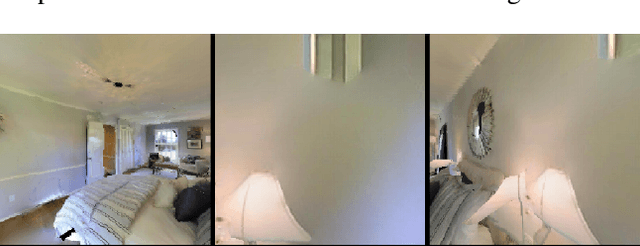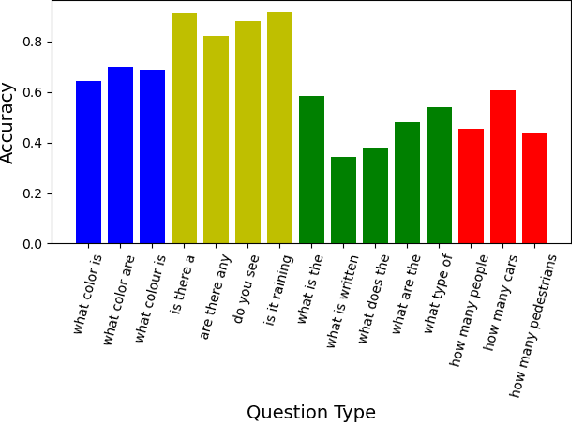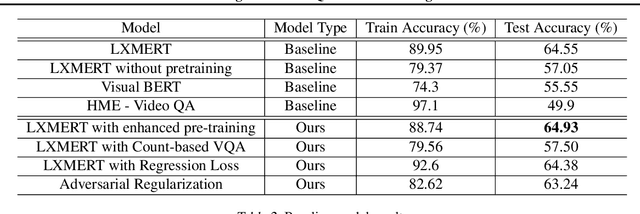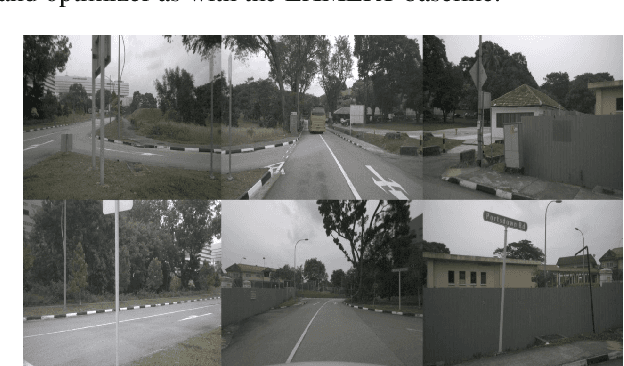Abhinav Khattar
NVIDIA Nemotron Nano 2: An Accurate and Efficient Hybrid Mamba-Transformer Reasoning Model
Aug 21, 2025



Abstract:We introduce Nemotron-Nano-9B-v2, a hybrid Mamba-Transformer language model designed to increase throughput for reasoning workloads while achieving state-of-the-art accuracy compared to similarly-sized models. Nemotron-Nano-9B-v2 builds on the Nemotron-H architecture, in which the majority of the self-attention layers in the common Transformer architecture are replaced with Mamba-2 layers, to achieve improved inference speed when generating the long thinking traces needed for reasoning. We create Nemotron-Nano-9B-v2 by first pre-training a 12-billion-parameter model (Nemotron-Nano-12B-v2-Base) on 20 trillion tokens using an FP8 training recipe. After aligning Nemotron-Nano-12B-v2-Base, we employ the Minitron strategy to compress and distill the model with the goal of enabling inference on up to 128k tokens on a single NVIDIA A10G GPU (22GiB of memory, bfloat16 precision). Compared to existing similarly-sized models (e.g., Qwen3-8B), we show that Nemotron-Nano-9B-v2 achieves on-par or better accuracy on reasoning benchmarks while achieving up to 6x higher inference throughput in reasoning settings like 8k input and 16k output tokens. We are releasing Nemotron-Nano-9B-v2, Nemotron-Nano12B-v2-Base, and Nemotron-Nano-9B-v2-Base checkpoints along with the majority of our pre- and post-training datasets on Hugging Face.
Llama-Nemotron: Efficient Reasoning Models
May 02, 2025Abstract:We introduce the Llama-Nemotron series of models, an open family of heterogeneous reasoning models that deliver exceptional reasoning capabilities, inference efficiency, and an open license for enterprise use. The family comes in three sizes -- Nano (8B), Super (49B), and Ultra (253B) -- and performs competitively with state-of-the-art reasoning models such as DeepSeek-R1 while offering superior inference throughput and memory efficiency. In this report, we discuss the training procedure for these models, which entails using neural architecture search from Llama 3 models for accelerated inference, knowledge distillation, and continued pretraining, followed by a reasoning-focused post-training stage consisting of two main parts: supervised fine-tuning and large scale reinforcement learning. Llama-Nemotron models are the first open-source models to support a dynamic reasoning toggle, allowing users to switch between standard chat and reasoning modes during inference. To further support open research and facilitate model development, we provide the following resources: 1. We release the Llama-Nemotron reasoning models -- LN-Nano, LN-Super, and LN-Ultra -- under the commercially permissive NVIDIA Open Model License Agreement. 2. We release the complete post-training dataset: Llama-Nemotron-Post-Training-Dataset. 3. We also release our training codebases: NeMo, NeMo-Aligner, and Megatron-LM.
Nemotron-H: A Family of Accurate and Efficient Hybrid Mamba-Transformer Models
Apr 10, 2025Abstract:As inference-time scaling becomes critical for enhanced reasoning capabilities, it is increasingly becoming important to build models that are efficient to infer. We introduce Nemotron-H, a family of 8B and 56B/47B hybrid Mamba-Transformer models designed to reduce inference cost for a given accuracy level. To achieve this goal, we replace the majority of self-attention layers in the common Transformer model architecture with Mamba layers that perform constant computation and require constant memory per generated token. We show that Nemotron-H models offer either better or on-par accuracy compared to other similarly-sized state-of-the-art open-sourced Transformer models (e.g., Qwen-2.5-7B/72B and Llama-3.1-8B/70B), while being up to 3$\times$ faster at inference. To further increase inference speed and reduce the memory required at inference time, we created Nemotron-H-47B-Base from the 56B model using a new compression via pruning and distillation technique called MiniPuzzle. Nemotron-H-47B-Base achieves similar accuracy to the 56B model, but is 20% faster to infer. In addition, we introduce an FP8-based training recipe and show that it can achieve on par results with BF16-based training. This recipe is used to train the 56B model. All Nemotron-H models will be released, with support in Hugging Face, NeMo, and Megatron-LM.
Upcycling Large Language Models into Mixture of Experts
Oct 10, 2024



Abstract:Upcycling pre-trained dense language models into sparse mixture-of-experts (MoE) models is an efficient approach to increase the model capacity of already trained models. However, optimal techniques for upcycling at scale remain unclear. In this work, we conduct an extensive study of upcycling methods and hyperparameters for billion-parameter scale language models. We propose a novel "virtual group" initialization scheme and weight scaling approach to enable upcycling into fine-grained MoE architectures. Through ablations, we find that upcycling outperforms continued dense model training. In addition, we show that softmax-then-topK expert routing improves over topK-then-softmax approach and higher granularity MoEs can help improve accuracy. Finally, we upcycled Nemotron-4 15B on 1T tokens and compared it to a continuously trained version of the same model on the same 1T tokens: the continuous trained model achieved 65.3% MMLU, whereas the upcycled model achieved 67.6%. Our results offer insights and best practices to effectively leverage upcycling for building MoE language models.
Analysis on Image Set Visual Question Answering
Mar 31, 2021



Abstract:We tackle the challenge of Visual Question Answering in multi-image setting for the ISVQA dataset. Traditional VQA tasks have focused on a single-image setting where the target answer is generated from a single image. Image set VQA, however, comprises of a set of images and requires finding connection between images, relate the objects across images based on these connections and generate a unified answer. In this report, we work with 4 approaches in a bid to improve the performance on the task. We analyse and compare our results with three baseline models - LXMERT, HME-VideoQA and VisualBERT - and show that our approaches can provide a slight improvement over the baselines. In specific, we try to improve on the spatial awareness of the model and help the model identify color using enhanced pre-training, reduce language dependence using adversarial regularization, and improve counting using regression loss and graph based deduplication. We further delve into an in-depth analysis on the language bias in the ISVQA dataset and show how models trained on ISVQA implicitly learn to associate language more strongly with the final answer.
What sets Verified Users apart? Insights, Analysis and Prediction of Verified Users on Twitter
Mar 12, 2019



Abstract:Social network and publishing platforms, such as Twitter, support the concept of a secret proprietary verification process, for handles they deem worthy of platform-wide public interest. In line with significant prior work which suggests that possessing such a status symbolizes enhanced credibility in the eyes of the platform audience, a verified badge is clearly coveted among public figures and brands. What are less obvious are the inner workings of the verification process and what being verified represents. This lack of clarity, coupled with the flak that Twitter received by extending aforementioned status to political extremists in 2017, backed Twitter into publicly admitting that the process and what the status represented needed to be rethought. With this in mind, we seek to unravel the aspects of a user's profile which likely engender or preclude verification. The aim of the paper is two-fold: First, we test if discerning the verification status of a handle from profile metadata and content features is feasible. Second, we unravel the features which have the greatest bearing on a handle's verification status. We collected a dataset consisting of profile metadata of all 231,235 verified English-speaking users (as of July 2018), a control sample of 175,930 non-verified English-speaking users and all their 494 million tweets over a one year collection period. Our proposed models are able to reliably identify verification status (Area under curve AUC > 99%). We show that number of public list memberships, presence of neutral sentiment in tweets and an authoritative language style are the most pertinent predictors of verification status. To the best of our knowledge, this work represents the first attempt at discerning and classifying verification worthy users on Twitter.
 Add to Chrome
Add to Chrome Add to Firefox
Add to Firefox Add to Edge
Add to Edge